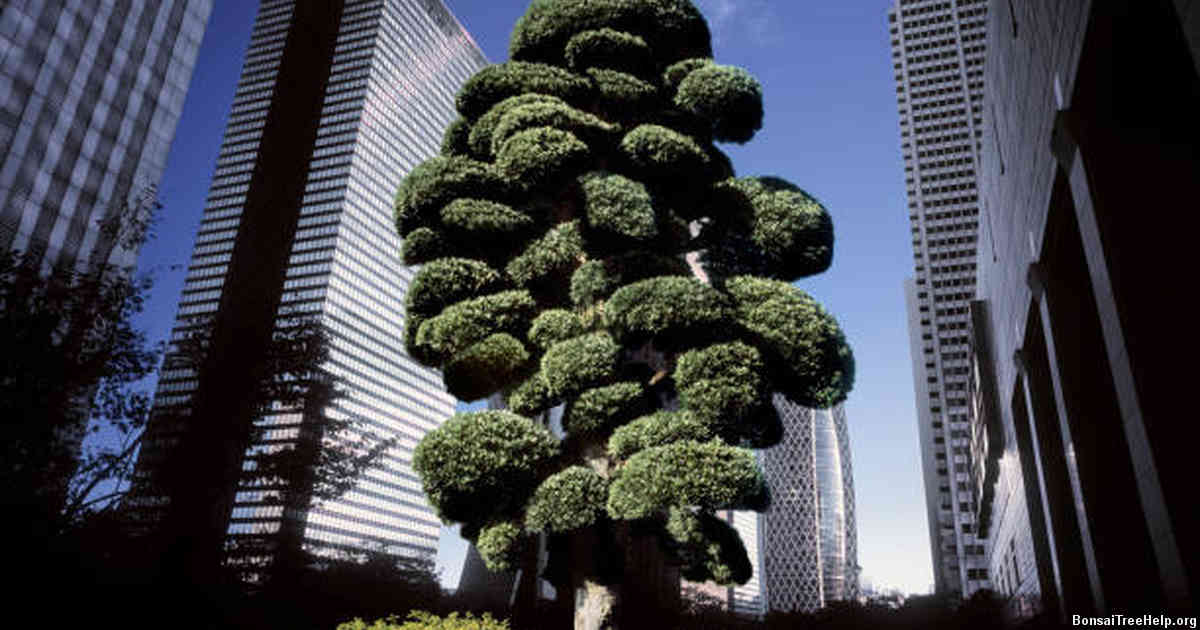
When it comes to bonsai pruning, timing is key. Most species should be pruned twice a year – once in late winter or early spring when the buds start to form, and again in summer as new growth appears. As a rule of thumb, you should wait until new shoots are about 10-15 cm (4-6 inches) long before pruning back any existing branches. This will help ensure that your bonsai remains healthy and balanced as it grows into its desired shape. If certain branches become overly long or misshapen, they can be trimmed at any time throughout the growing season. However, make sure not to trim too severely; this could cause damage or excessive stress to your plant.
Contents:
- Understanding Bonsai Pruning: The Importance of Timing
- Factors to Consider Before Cutting Your Bonsai
- Signs That Your Bonsai is Ready for Pruning
- Techniques for Precision Pruning of a Bonsai Tree
- Mistakes to Avoid When Cutting Your Bonsai
- Tips for Maintaining the Health of Your Bonsai After Pruning
- Professional Help vs DIY: Choosing the Right Approach for Your Bonsai Tree
Understanding Bonsai Pruning: The Importance of Timing
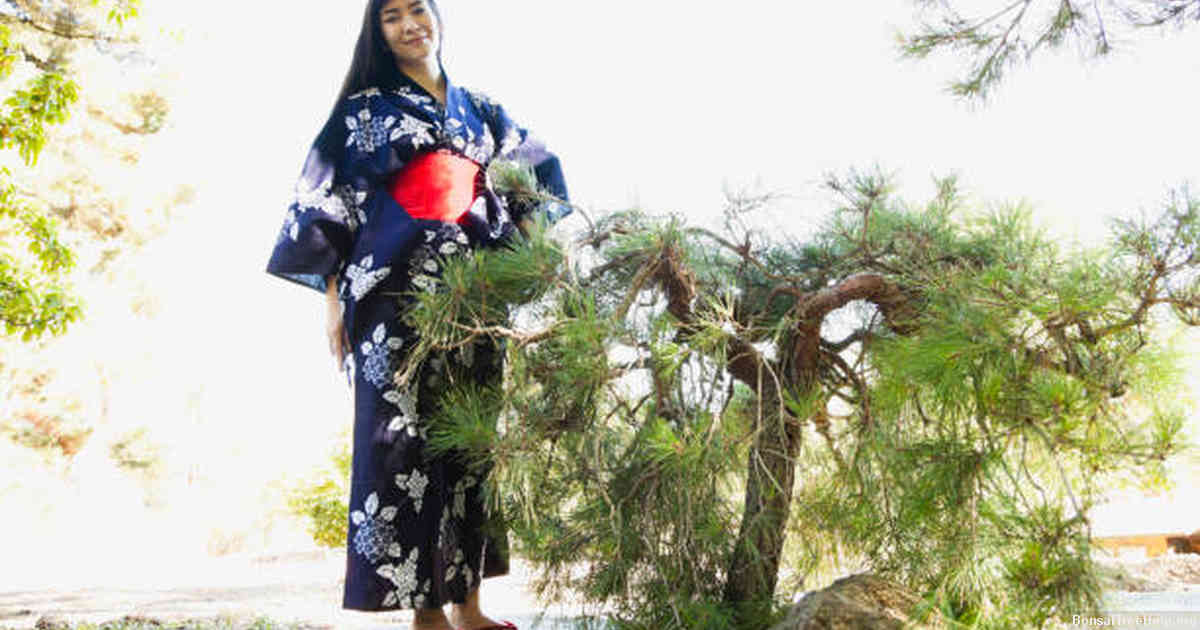
In order to maintain the desired shape of a bonsai, it is important to understand when and how to properly prune it. The type of tree as well as its size will play an important role in determining the ideal timing for trimming your bonsai. If you trim too early, then the foliage may be sparse and slow-growing; whereas if you wait too long, branch structure can become congested and unsightly.
Although there are no set rules governing the optimal time to trim a bonsai, certain species generally require more frequent maintenance than others. Small evergreens such as ficus or junipers have an especially vigorous growth habit and should therefore be trimmed regularly in order to keep their shape intact. Deciduous trees like maples or elms typically need less frequent pruning since their branches tend to grow at a slower rate. It is always best practice to inspect your bonsai frequently so that any dead wood or other irregularities can be addressed promptly.
Pruning should also take into consideration seasonal changes in temperature and light levels, which affect how quickly plants develop new buds. For example, during springtime many deciduous species bloom heavily so additional care must be taken not cut off developing flowers prematurely. Conversely, during winter months some coniferous trees require minimal maintenance since they retain much of their needle coverage even after extensive pruning sessions; however caution should still be exercised as dormancy periods generally last only until bud break occurs in late March or April depending on region.
Factors to Consider Before Cutting Your Bonsai
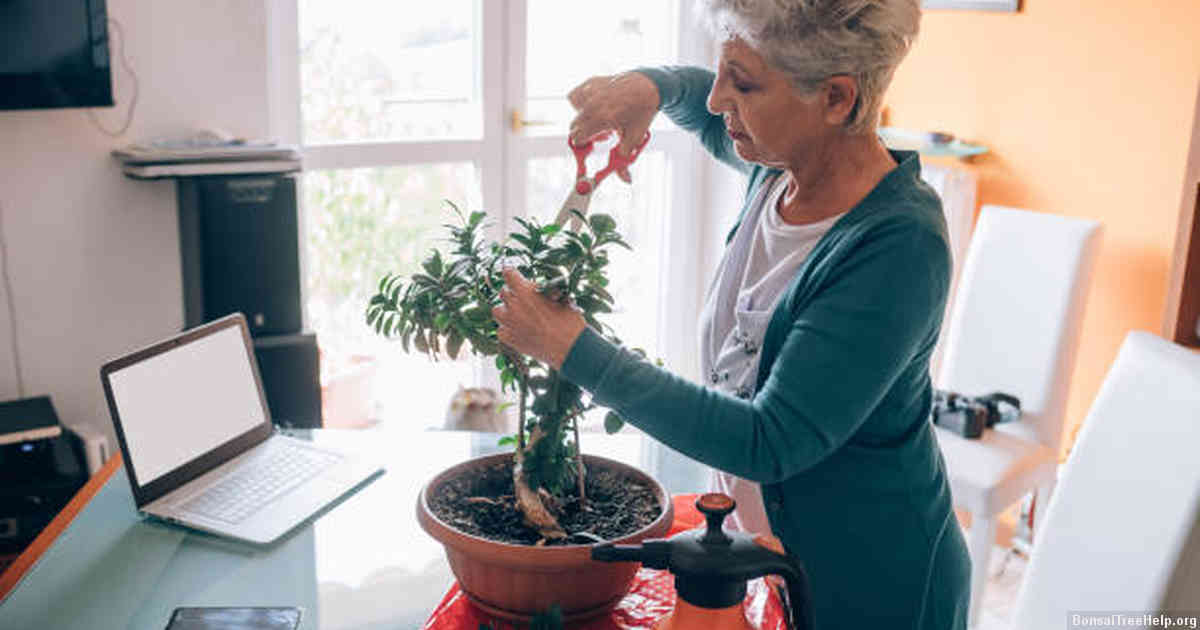
When trimming your bonsai, there are a few key elements to take into account. Primarily, you should consider the age and type of tree before pruning it. Different species require different techniques; for example, jades and pines will often need differing styles of care. Trees that are younger may not require as much regular trimming compared to mature specimens.
One of the most important factors to bear in mind is ensuring you have the proper tools for cutting your bonsai tree. You’ll want to invest in high-quality scissors, shears and possibly branch-cutting saws depending on the size and situation of your bonsai. Poor quality blades can damage bark or leave uneven edges which can stunt a bonsai’s growth or cause it distress – so investing wisely here can make all the difference.
As with any other horticultural activity, patience is also paramount when considering when to cut your bonsai back. It’s crucial that you familiarize yourself with how best to handle each individual tree and ensure that its structure remains balanced throughout pruning sessions – this helps avoid shocking new growth which isn’t desired by many people caring for their miniature trees.
Signs That Your Bonsai is Ready for Pruning
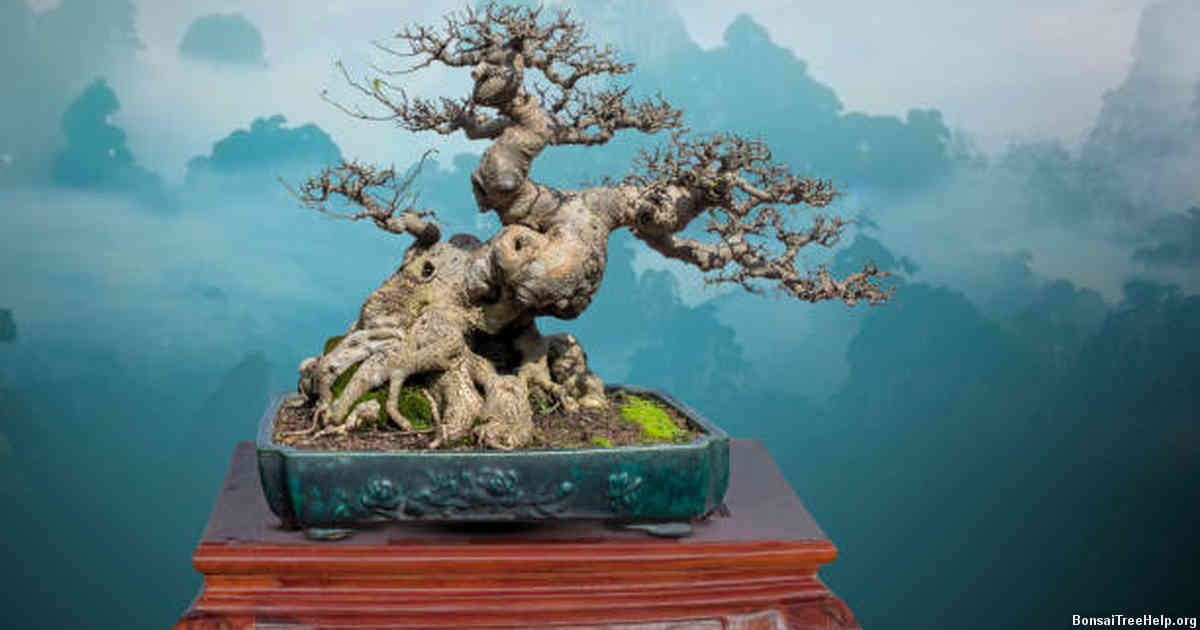
When it comes to caring for a bonsai, regular pruning is essential in order to maintain the desired shape and size. Pruning should be done when your bonsai’s branches start overgrowing or its growth slows down, making it difficult to maintain its desired shape. But how can you tell if your bonsai is ready for pruning? Here are some signs that indicate it may be time:
Your bonsai has an abundance of small leaves along the inner portion of each branch as well as many intertwined shoots. This indicates that your bonsai has reached full maturity, meaning now is a great time to trim away any excess foliage and focus on shaping the plant with selective pruning.
If you notice a lot of dead branches, brown spots and drooping leaves on your bonsai, this could be indicative of weak areas where new shoots have failed to grow back properly due to lack of proper maintenance or disease. To promote healthy new growth, remove any damaged parts from the tree during pruning sessions.
If you’re looking for dramatic changes in shape or drastic decreases in size for your bonsai plant – such as creating flat tops or lollipop shaped forms – it may mean that more intensive pruning will need to take place so make sure you know what kind of style you would like before getting started. With careful observation and accurate timing you can keep your little piece of nature looking beautiful by regularly giving it the attention it needs through proper pruning techniques.
Techniques for Precision Pruning of a Bonsai Tree

When shaping a bonsai tree, the art of precision pruning should never be taken lightly. To ensure beautiful results, one must understand and use various techniques to properly direct the growth of their prized specimen. Precision pruning should begin when your bonsai is still young, as this will allow you to shape it before its form becomes difficult to manipulate.
The most important thing when precision pruning is careful observation of your bonsai’s growth pattern so that you can determine where and how much material needs to be removed. Prune off small sections at a time, frequently checking for desired results in order to create natural-looking contours. During branch reduction, try not to cut too close to the trunk as this will leave large scars on the trunk which are unattractive for show quality bonsais or unhealthful in general for any type of tree. If a branch has been severely trimmed back–say more than half–use sealer paste on the area immediately after cutting. This prevents dieback from occurring and allows callous formation over the wound site soon after trimming instead of several weeks later like with other trees.
In addition to typical trimming work, removing excess leaves from crowded areas and thinning out internal shoots within branches can also help promote branching that followes desirable directions which contribute significantly towards achieving an attractive overall shape of your bonsai tree. However, take note that defoliation methods may slightly reduce vigor while encouraging ramification – thus only use it judiciously or sparingly if strong foliage growth is desired instead on certain branches or areas.
Mistakes to Avoid When Cutting Your Bonsai
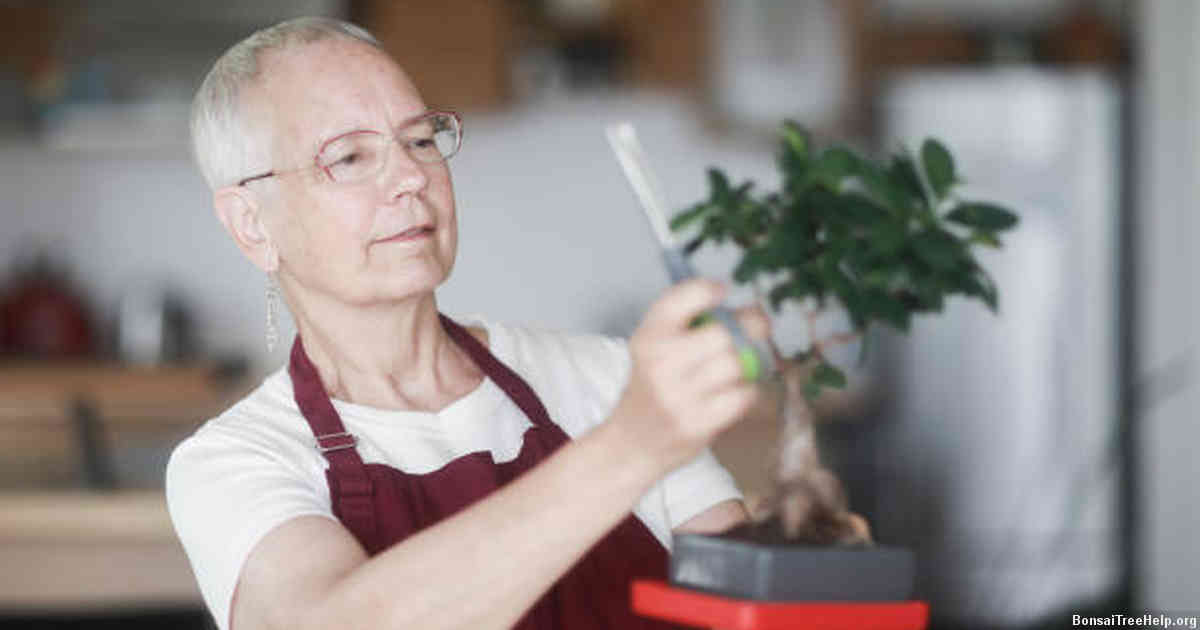
When it comes to creating and caring for your bonsai, one of the most important steps is trimming. Pruning correctly can keep your bonsai looking lush and healthy while avoiding common mistakes will also help you avoid any potential issues with your bonsai in the future. Here are a few tips on how to properly cut your bonsai without making any costly errors:
Make sure that you have sharp shears or scissors when cutting your bonsai. Blunt tools will often leave behind jagged edges and irregular shapes which can be very difficult to fix later on. It’s also important to be mindful when pruning as taking off too much at once could lead to stunted growth, further stressing out the tree. Thus, it’s best to always err on the side of caution by taking off less rather than more whenever possible.
Another mistake people tend to make when pruning their bonsais is not removing dead or sick branches from the trunk. Even if these branches do not appear harmful at first glance, they may still prove detrimental for the overall health of the tree due to pests or diseases spreading via them. Regular maintenance can ensure that only healthy and vibrant sections remain part of a healthy-looking whole.
Cleaning tools after every use is essential for preventing infections between different trees – regardless of whether they’re located indoors or outdoors. Alongside this basic step, regularly applying organic pesticides such as neem oil will protect delicate new buds from fungal damage; overusing chemical solutions should however be avoided as otherwise this could eventually cause root rot and other associated problems within your home garden centrepiece.
Tips for Maintaining the Health of Your Bonsai After Pruning

After pruning a bonsai, it is crucial to ensure that the tree maintains its health and vigor. Here are some useful tips for maintaining your bonsai’s wellbeing post-pruning:
Lighting and watering should be tailored to the particular needs of the species of bonsai you own. Some trees may require more frequent light exposure while others will benefit from shade or indirect sunlight. Moreover, different species of trees will have vastly different water requirements; some need copious amounts of H2O while others require minimal hydration. Ensure you follow directions on how much lighting and water your particular tree requires in order to avoid stressing your bonsai out.
Fertilizer is an important part of helping keep a healthy bonsai after pruning. Feeding your plant the correct amount and type of fertilizer regularly can ensure balanced growth and optimum strength against diseases or pests. Using slower-release organic fertilizers can assist in avoiding any overfeeding accidents which might lead to burnt roots due to too many nutrients being absorbed at once by the tree’s system.
Potting soil plays a vital role in ensuring good health for your bonsai after pruning as well. A mix designed specifically for bonsais should be employed – this ensures adequate drainage without being too compacted, providing plenty of aeration around the root system while retaining enough moisture so that the plant can remain adequately hydrated over extended periods between watering sessions.
Professional Help vs DIY: Choosing the Right Approach for Your Bonsai Tree

When it comes to choosing the right approach for your bonsai tree, there is no one-size-fits-all answer. Some bonsais may benefit from professional assistance while others are easier to maintain with a do-it-yourself (DIY) approach. Although professional help can come at a cost, there are many advantages to consider when deciding whether or not you should enlist professional help for your bonsai maintenance needs. To begin with, properly trained and experienced professionals will know how to prune, shape, and wire your bonsai in the most optimal way according to its species and characteristics. If a DIY attempt is not done correctly, it could lead to damage or even death of the plant; thus resulting in loss of time and money. Professional care can provide peace of mind by ensuring that this does not happen as well as providing advice about future steps such as using soil mixes, proper watering schedules and fertilizers tailored for individual specimens.
On the other hand, DIY approaches present several advantages too. For starters, they offer more control over timing and budgeting which makes them attractive options for many enthusiasts with limited financial means. Ownership of maintenance practices allows individuals more freedom in experimenting with different techniques than they would have if they opted for professionally operated services only. However it’s important to note that before engaging into experimental activities on your own; knowledge about applicable techniques is necessary since mistakes can be costly – both financially as well as aesthetically – so caution is warranted whenever experimenting on an inexperienced level takes place.
Leave a Reply